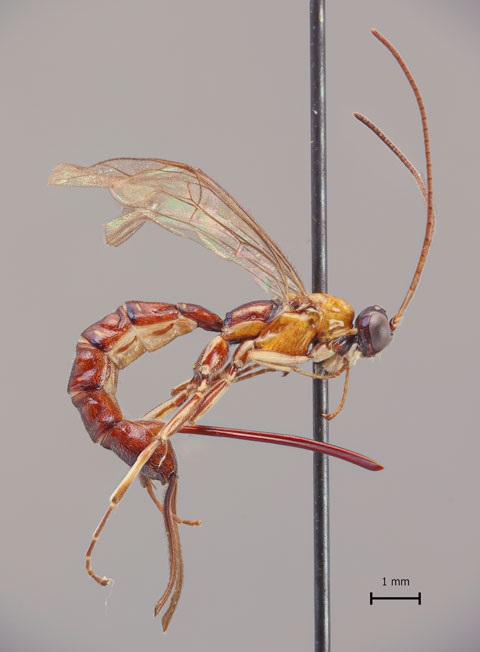A new species of wasp was discovered in the Amazon by a team of scientists from the Finnish University of Turku. A creature of amazing abilities, endowed with an exceptionally large sting that surprised scientists
He is about to end up run over, his mother saves himA new species of wasp was discovered in the Amazon by a team of scientists from the Finnish University of Turku. A creature of amazing abilities, endowed with a sting exceptionally large which surprised the scientists.
The new insect, called Clistopyga crassicaudata, is found in the extremely diverse transition zone between the Andes and the Amazon rainforest and uses its huge stinger to both lay its eggs and inject its own venom, paralyzing its victims.
Researchers from the Biodiversity Unit of the University of Turku in recent years have discovered and described several new animal species from all over the world, in particular from the Amazon. Many of them have unusual characteristics and habits. In their latest study, in collaboration with colleagues from Colombia, Spain and Venezuela, the scientists discovered this new species of wasp.
A scary and special sting
The sting of the new parasitic wasp it is not only long but also much wider than that of other similar ones. All wasps, such as bees and hornets, have a stinger to inject venom or lay eggs. Parasitoid wasps usually have one long and ovipositor (the organ with which females are equipped to lay eggs) useful for reaching host animals living inside a tree, for example. With the ovipositor, the egg is placed on or inside the host, and since it also functions as a sting, the female wasp can inject poison into the host to paralyze it.
“I've been studying tropical parasites for a long time but I've never seen anything like it. The sting looks like a ferocious weapon, ”said prof. Ilari E. Sääksjärvi.
This is the behavior of the new wasp discovered among the specimens of insects observed in the rainforest of the Amazonian plains. The recently described parasitoid species belong to the rare Clistopyga genus which specializes in spawning in spiders or spider egg sacs. Wasps search for spiders living in nests and paralyze them with a quick injection of venom. At that point, the female wasp lays her eggs on the paralyzed spider and the larva feeds on it, on any eggs and even on the young.
It is not known for sure which spider prefers this species of wasp. According to Finnish scientists, the giant sting is most likely a highly sophisticated tool as well, "but unfortunately we can only speculate on its purpose."
Precious wasps
The research team of the Biodiversity Unit is currently applying for funding for new field studies to look for other parasitic wasps in the western Amazon. They also help conserve endangered rainforests.

“Beautiful and exciting species with strange habits capture people's attention and underline the importance of safeguarding vulnerable ecosystems,” concludes Sääksjärvi.
Nature will never cease to amaze us.
The study was published in Zootax.
READ also:
- The 10 new species discovered in 2018 (and already at risk of extinction)
- Wasps fly with solar energy. Here's how they produce it
Francesca Mancuso


























